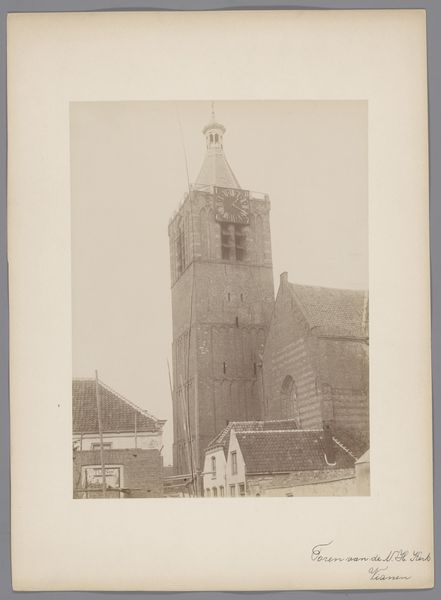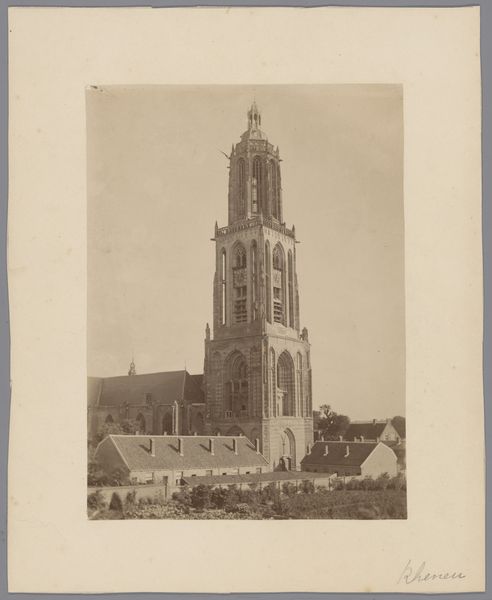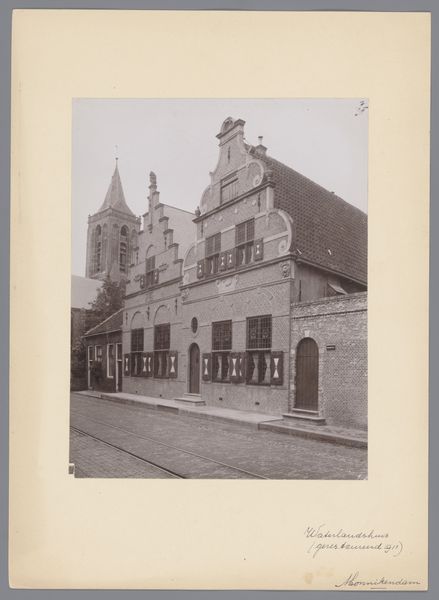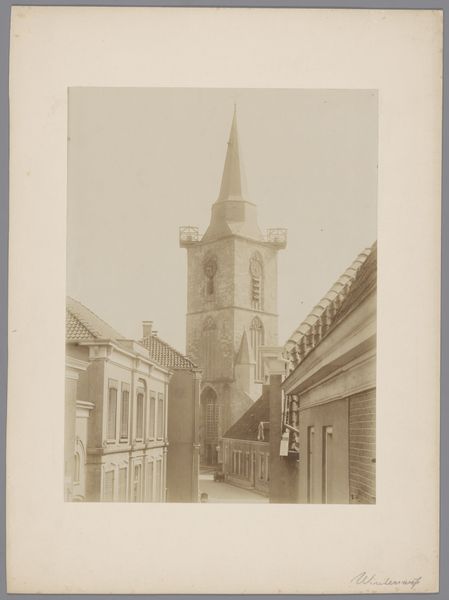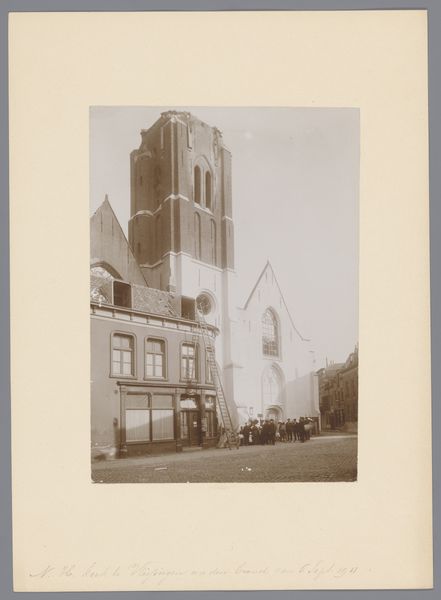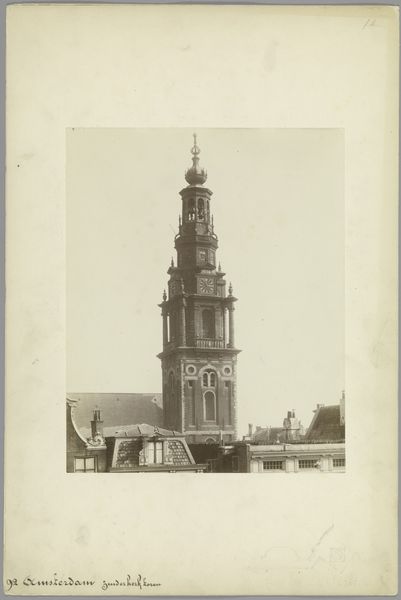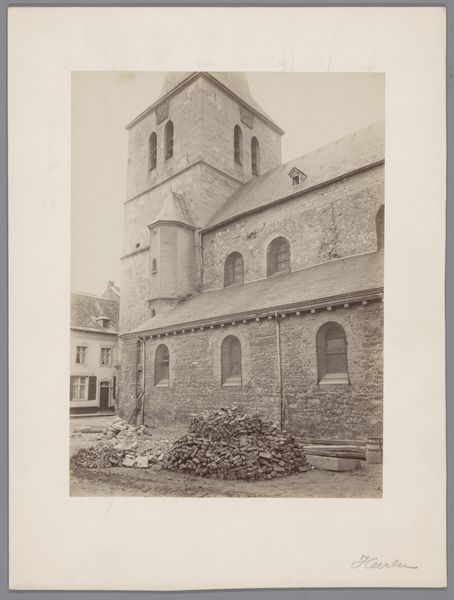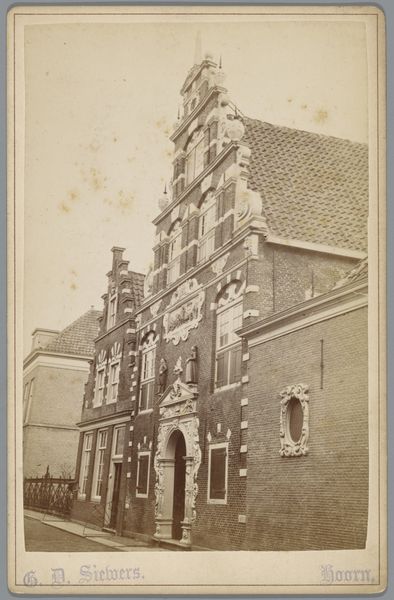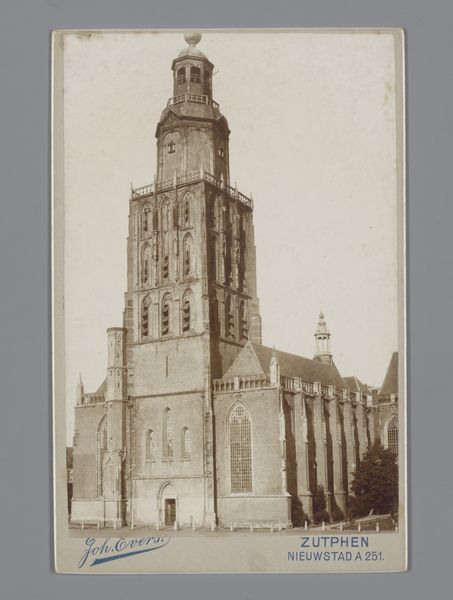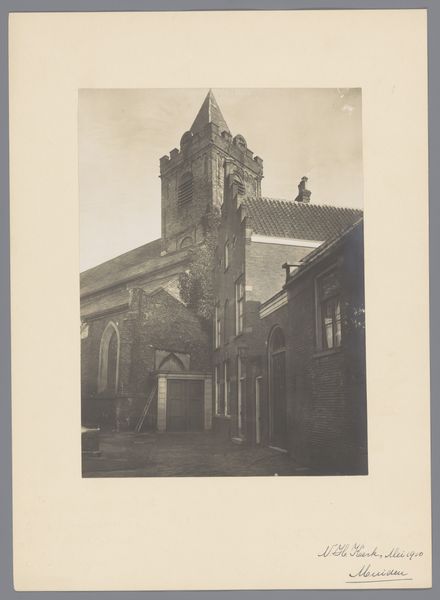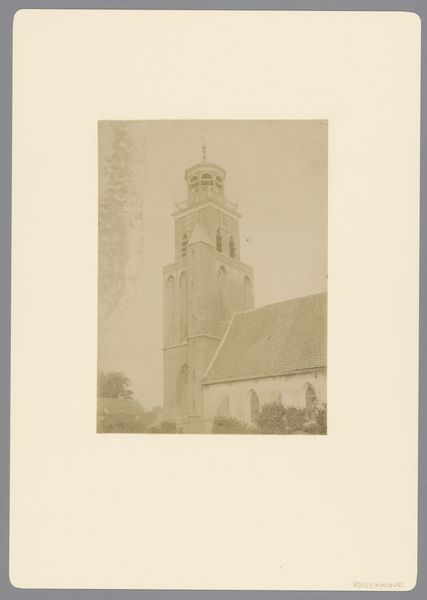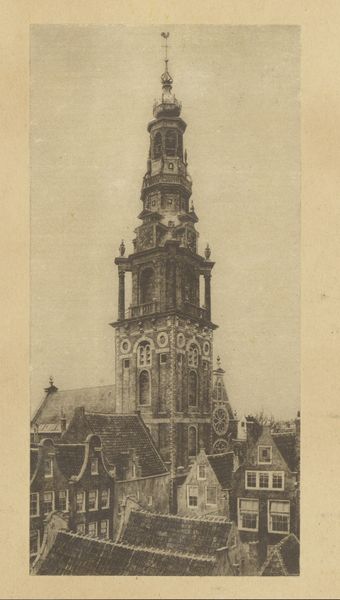
Greifswald, St Nicholas’s Church, Series: North German Brick Cathedrals c. 1928 - 1929
0:00
0:00
Dimensions: image: 228 x 172 mm
Copyright: © Estate of Albert Renger-Patzsch / DACS 2014 | CC-BY-NC-ND 4.0 DEED, Photo: Tate
Curator: Albert Renger-Patzsch's photograph presents us with Greifswald, St Nicholas's Church, part of his series focusing on North German Brick Cathedrals. Editor: It's imposing, isn’t it? The angle makes the church tower loom over those smaller buildings, creating a real sense of scale. Curator: Absolutely. The choice of brick as a primary material speaks volumes about the local resources and the architectural traditions of the region. It’s a testament to functional design, where readily available materials are used to create monumental structures. Editor: And the socio-political implications? Cathedrals were central to community life. Renger-Patzsch really captures how religion was such an important part of the social fabric. The way he frames the architecture, it feels very permanent, a solid representation of power. Curator: Precisely. He wasn’t just documenting the architecture; he was showing the relationship between the material, the labor, and the social structure it represents. Editor: It makes you think about how these structures shaped the lives of the people living in their shadows. Curator: Indeed. Renger-Patzsch gives us an insight into that world, brick by brick. Editor: A powerful reminder of the forces that shape our world.
Comments
tate 7 months ago
⋮
http://www.tate.org.uk/art/artworks/renger-patzsch-greifswald-st-nicholass-church-series-north-german-brick-cathedrals-p79959
Join the conversation
Join millions of artists and users on Artera today and experience the ultimate creative platform.
tate 7 months ago
⋮
Greifswald, St Nicholas’s Church is a black and white photograph picturing the exterior of a brick gothic church. The title identifies the building as the church of St Nicholas in Greifswald, a town in north-east Germany bordering the Baltic Sea. Built in the thirteenth century, the church is dedicated to the patron saint of seafarers and merchants. The lower half of the image is dominated by the intersecting tiled roofs of a two storey octagon. Above this rises a tall, ornate tower, topped with a curved double lantern that resembles the onion domes of Russian Orthodox churches. Rendered clearly and sharply, the building dominates the image, filling the frame and blocking out environmental detail; only telegraph wires are faintly discernible criss-crossing behind the tower.
